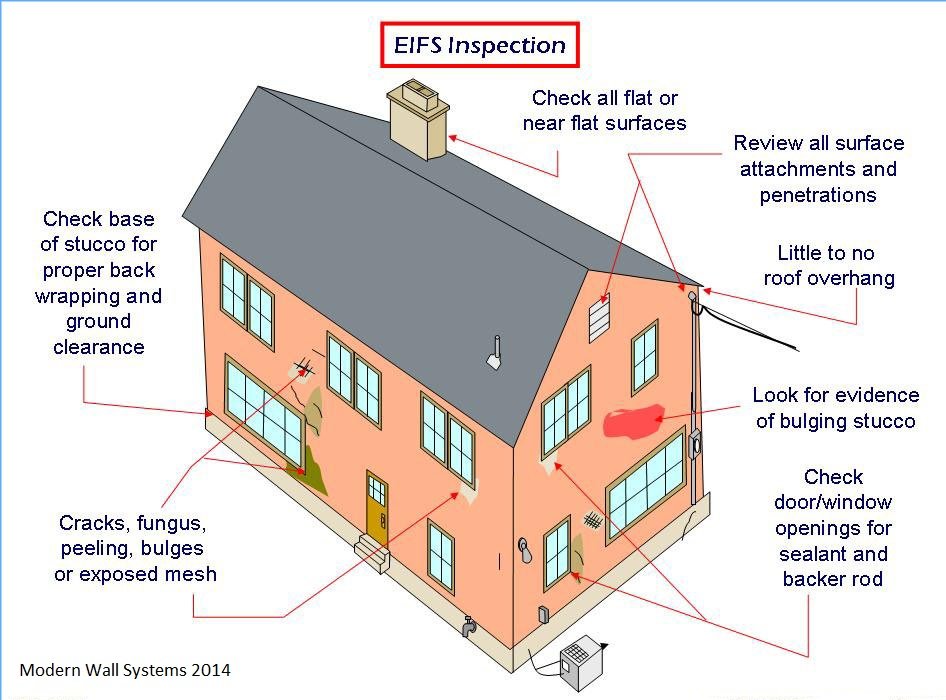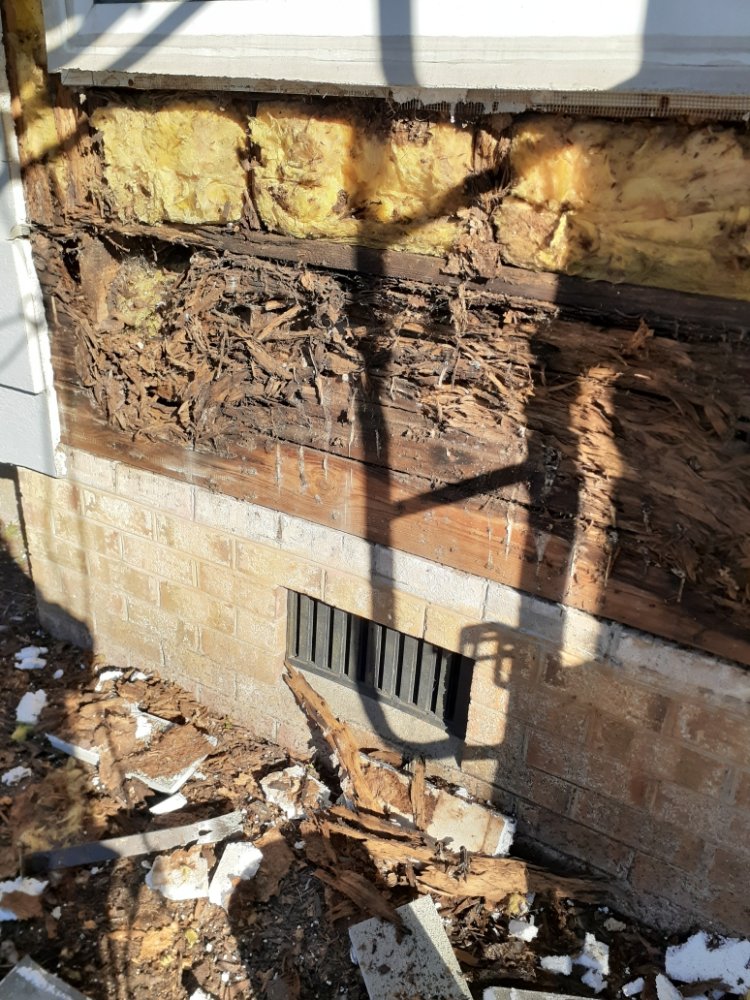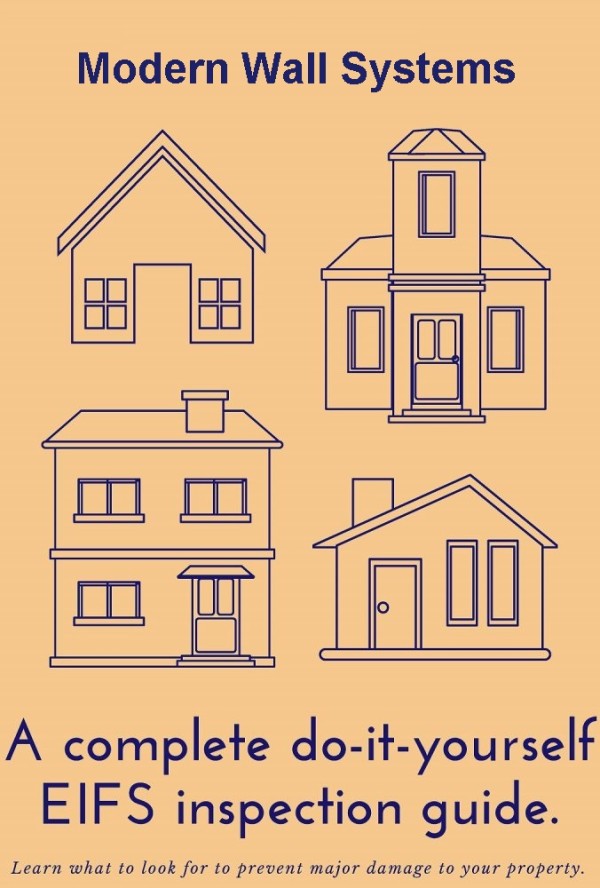Exterior Insulation and Finish Systems (EIFS) are multi-layered exterior wall systems that are used on both commercial buildings and homes. They provide superior energy efficiency and offer greater design flexibility than other cladding products.

- Framing and Approved Substrate (by others)
- Rollershield Liquid-applied Air/Water Barrier (LAB)
- Vertical notched adhesive and drainage channel
- Master Wall Insulation Board
- F&M or MBB Base Coat
- Standard Mesh minimum
- Superior Finish
Developed in Europe in the 1950s, EIFS was introduced in the U.S. almost 50 years ago. They were first used on commercial buildings, and later, on homes. Today, EIFS accounts for nearly 40% of the U.S. commercial exterior wall market.
Should defective EIFS be ripped off or not?
The answer is uncomplicated and applies to practically all types of cladding. For starters, you must go beyond the symptoms of water intrusion problems, and find the actual sources of the leaks. Most EIFS problems occur in residential construction due to a lack of quality control initiatives in the field at the time of construction. EIFS is not a cladding the average homeowner can repair, so if damage is found it is wise to hire an EIFS repair contractor who has been trained in the repair of EIFS structures by manufacturers.
Before you hire any so-called EIFS expert remember to do your homework and ask for references.
CLADDING AND THE BUILDING ENVELOPE: EIFS and other forms of cladding do not normally fail. That is to say, water does not penetrate directly through the surface of the cladding. It penetrates the building envelope. 
Moisture intrusion issues? Please Read: "Understanding Water" by Steve Peklenk*
The envelope includes secondary moisture barriers such as felt paper and Tyvek, flashing, and the primary moisture barrier which includes windows, doors, cladding, and sealants. The points of water intrusion are identical in virtually every condo or residential project I inspect. The windows were not flashed or caulked adequately and leaked at the lower corners, kick out or diverter flashing was not installed at roof/wall intersections, allowing roof runoff to get behind the cladding, and decks were not properly flashed.
If the above conditions did not exist, there would be no water damage.


BAD ADVICE? Many so-called EIFS professionals are quick to say, “You have a leak. Rip it off”.
The real answer: Most EIFS clad structures do not have to be stripped entirely but instead, all areas of possible damage should be strategically demoed by a qualified EIFS contractor. So please, do not rip off your EIFS without substantial forensic investigation.
- Check roof/wall intersections to see if kick-out flashing has been installed to divert the flow of water away from the vertical wall.
- Check the lower corners of windows for any gaps in the corner miters, and probe the sealant to determine if it is still flexible.
- Look for any bulges at the second-floor line.
- Carefully check your deck, if it is wood frame and attached to the house there should be visible flashing and no sign of wood rot.
EIFS should not be installed below grade, so when replacing mulch, first remove the old mulch.
85% of all remediation costs on residential buildings is less than $2,500 and is usually a maintenance issue. Keep in mind, water intrusion is cumulative. The longer water penetrates the building envelope, the greater the potential damage. If only everyone had used cement board instead of plywood back when EIFS was going up everywhere in the 80’s and 90’s then we wouldn’t have the issues we see today.
CONCLUSIONS: When your home leaks, it’s a warning sign of the problem. Something in the building envelope is usually the problem. If you have leaks in the ceiling, it may be the roofing, but it may also be flashing or clogged gutters.
Treat your home the same way your doctor treats your medical ailments. Symptoms are due to causes, and causes are what must be treated. Don’t waste your time treating the symptom (like slapping caulk on everything), it will just mask the core cause and could lead to more severe problems.
If you own an EIFS home, don’t panic.
If you plan to sell your EIFS home, get it inspected prior to putting it on the market, as any respectable real estate professional would suggest.
If you plan to buy an EIFS home, require an inspection as a condition of purchase.
Need more help with this?
Don’t hesitate to contact us here.



